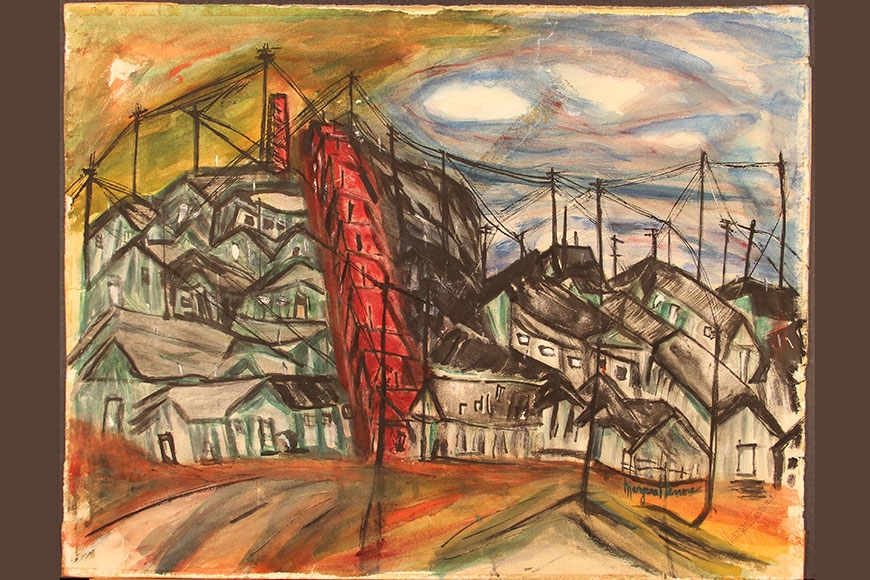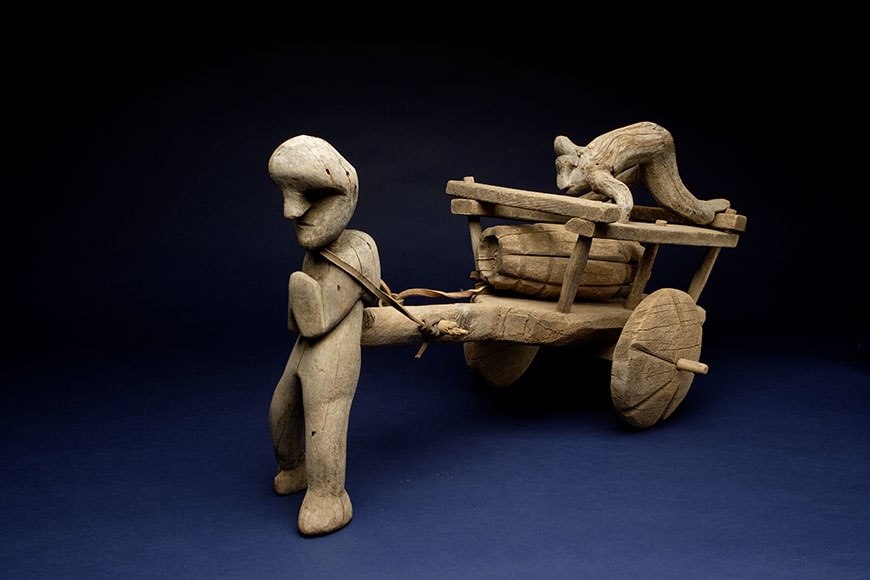"Mexican American Art Since 1848” secures nearly $600,000 in funding
Before 2021, if you wanted to gain a broad understanding of Mexican American art, you’d have to take a road trip, visiting the many individual institutions across the country that house collections by and about Mexican American artists.
Enter Mexican American Art Since 1848 (MAAS1848), an online search tool created with the goal of “[making] it easier to find and study Mexican American art, culture, and history.” The portal makes accessible over 20,000 records of and about art created by Mexican American artists, drawn from libraries, archives, and museums.
In the first half of 2022, the project secured nearly $600,000 in combined support from three organizations: the National Endowment for the Humanities (NEH) Humanities Collections and Reference Resources Implementation grant, the Mellon Foundation, and the American Council of Learned Societies (ACLS) Digital Justice Development grant.
“That’s a lot of money for a humanities research initiative [to raise] in one year—and we’re just getting started,” says Karen Mary Davalos, co-intellectual architect of the project and a professor in the Department of Chicano & Latino Studies. “The three grants validate the work we are doing and provide the support to keep expanding what is available and possible in the digital realm for artists of color, students, and communities interested in the power of art to transform us.”
Investing in a Growing Project
The ACLS and Mellon Foundation grants support the enhancement of the portal’s first iteration and the planning for its second, which will more than double the size of the collection by compiling and digitizing over 20,000 new images from the nation’s largest concentrations of Mexican American art housed at the National Museum of Mexican Art (Chicago), the Mexic-Arte Museum (Austin, Texas), and the National Hispanic Cultural Center (NHCC, Albuquerque). To prepare for the second iteration of the portal, the project organizers will collaborate with experts in library sciences, artists, and the three stakeholder museums to design sustainable technical and cross-institutional relationships.
The Mellon Foundation grant supports hiring a postdoctoral associate, Dr. Lisa Justine Hernandez, who is uniquely qualified to remediate the challenges of working with mainstream and underfunded community institutions. With a PhD in Chicana literature and a bachelor’s degree in computer science, she brings expertise to handle the technical enhancement and internal design of MAAS1848 as well as the intellectual mission of the project. Hernandez is the creator and developer of This Bridge Called Cyberspace, a free, searchable digital archive for publications by and about women, Indigenous people, and people of color.
The ACLS grant supports the hiring of graduate and undergraduate research assistants and financial compensation to the stakeholder museums in Chicago and Austin for access to their permanent collections and staff. The undergraduate research assistant will support Davalos’ art history course that engages artists in Minnesota and California.
The NEH grant supports the digitization of NHCC’s permanent collection, approximately 3,400 works of art and 16 linear feet of related documentation in the art museum’s collection, which spans colonial, modern, and contemporary periods. Over the three-year period of the grant, the digitized materials will be published to the museum’s website and ingested into MAAS1848, which—as an open-source, aggregating portal—progressively unifies digital files of art and related documents.
Digital Justice
MAAS1848 will help to increase digital and in-person visitors to NHCC by creating a national platform for its collection. Crediting the institutions that steward materials in their collection is central to the way the portal is set up. As the MAAS1848 website puts it: "This post-custodial design rejects colonial models of knowledge extraction and appropriation by operating an inclusive and democratic method for digital dissemination."
Another important step in making the MAAS1848 portal as inclusive and helpful as possible is to eliminate biased subject terms such as “ugly woman” and “illegal alien.” That kind of problematic terminology was inherited from the mainstream institutions that supplied the content for the first iteration of the portal. “We are updating language our communities identify as harmful and inaccurate,” says Davalos. “Partnering with Hispanic-serving institutions, such as the University of Texas Rio Grande Valley, and artists is essential to our work.”
Driven by community-engagement methods that reinforce diversity, equity, and inclusion, Davalos co-authored the NEH grant with the recipient, the NHCC. “This strategy allows the partner institution to receive the bulk of the funds and indirect costs, an essential strategy for community-based institutions that are relatively underfunded,” she explains. “This work is social-justice driven. It is about directing support and getting funds for the community institutions.”
Increasingly Diverse Content
As the portal’s collection grows, so does the diversity and nuance of its content. For example, a significant percentage of the NHCC’s holdings are works created by Nuevomexicano and Rocky Mountain artists, and collection focal points are New Mexican, 19th-century, and women’s art, which diversifies understanding of American and Mexican American art.
The following highlights from the NHCC’s permanent collection increase access to the temporal, gender, geographic, and media diversity of Mexican American and American art.
The Herrera Chavez Collection
This collection of works by and archival material of New Mexican artist Margaret Herrera Chavez (1912–1992) consists of paintings, prints, original woodblocks for printmaking, and the artist’s papers housed at the NHCC’s History and Literary Arts, Library, and Archives. It contains one linear foot of materials, including eight original test prints for woodcut art in a scrapbook. The archival documents contextualize the art and life of Herrera Chavez.

The Patrocinio Barela and Edward Gonzales Collections
A major gift of sculpture by New Mexican artist Patrocinio Barela (circa 1900–1964) and paintings by Edward Gonzales (1947–) along with related archival material (5 linear feet) makes NHCC home to the largest public collection of artwork by each artist. Barela is both a traditional and modern artist who blends styles and conventions unique to the woodcarvers of New Mexico with modern abstraction.

Traditional Arts of Northern New Mexico
The NHCC’s significant collection of 19th-, 20th-, and 21st-century artworks celebrating Northern New Mexico traditions includes santos, retablos, furniture, straw applique, tin work, and textiles (weavings and embroidery). These media and artistic traditions enhance how scholars, students, and the public understand the categories of “art” and “aesthetics.”
Rudy Padilla Paño and Prison Art Collection
In 2019, the NHCC purchased the highly desirable Rudy Padilla Paño and Prison Art Collection, a private collection of paño art (drawings or paintings on handkerchiefs traditionally made by incarcerated Mexican American artists) as well as six linear feet of accompanying documentation. Once accessible, the NHCC will become the nation’s center for paño study.
About MAAS1848
Mexican American Art Since 1848 compiles digital information from libraries, archives, and museums. The post-custodial design refrains from the colonial legacy of knowledge and information extraction; rather it links collections and makes harvested information searchable from a single location. The first iteration of the portal launched in the summer of 2021.
MAAS1848 is part of the broader initiative, Rhizomes: Mexican American Art Since 1848, a multi-component ecosystem designed to resolve the misunderstandings and invisibility of visual art by Mexican American artists, a dispossessed community.
Follow Rhizomes of Mexican American Art Since 1848 on Twitter

